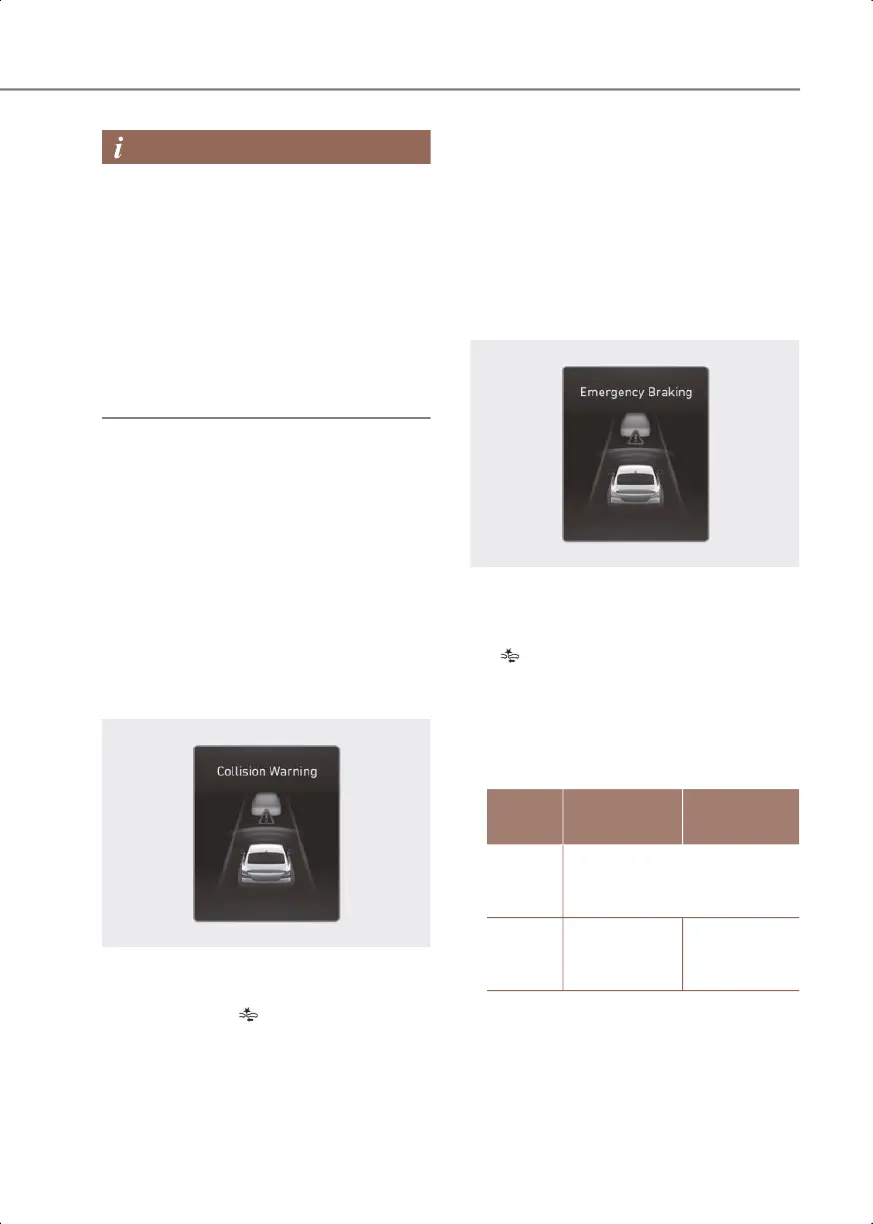7
7-7
• If you change the Warning Methods,
the Warning Methods of other Driver
assistance systems may change.
• The Warning Volume and Haptic
Warning cannot be turned off at the
same time. When one of the warning is
turned off the other is activated.
• If the engine is restarted, Warning
Methods will maintain the last setting.
• The setting menu may not exist
depending on the vehicle specification.
Forward Collision-Avoidance
Assist operation
Basic function
The basic function for Forward
Collision-Avoidance Assist is to warn and
help control the vehicle depending on the
collision risk level: "Collision Warning",
"Emergency Braking" and "Stopping
vehicle and ending brake control".
Collision Warning
OIK070007L
To warn the driver of a collision, the
"Collision Warning" warning message
appears, and the warning light blinks
on the instrument cluster with a warning
sound and the steering wheel vibrates.
• If a vehicle or powered two-wheeler is
detected in front, the function will
operate when your vehicle speed is
about 6-124 mph (10-200 km/h).
• If a pedestrian or cyclist is detected in
front, the function operates when your
vehicle speed is about 6-53 mph (10-85
km/h).
Emergency Braking
OIK070008L
To warn the driver that emergency
braking will be assisted, the "Emergency
Braking" warning message appears and
the warning light blinks on the
instrument cluster with a warning sound
and the steering wheel vibrates.
Emergency braking will operate under the
following conditions.
• Vehicle or powered two-wheeler:
• Pedestrian or cyclist:
The function will operate when your
vehicle speed is about 6-40 mph (10-65
km/h).
Driving
vehicle
Stopped
vehicle
Weak
braking
power
About 6-124 mph
(10-200 km/h)
Strong
braking
power
About 6-81
mph (10-130
km/h)
About 6-47
mph (10-75
km/h)
0_IK_PE_en_US.book Page 7

